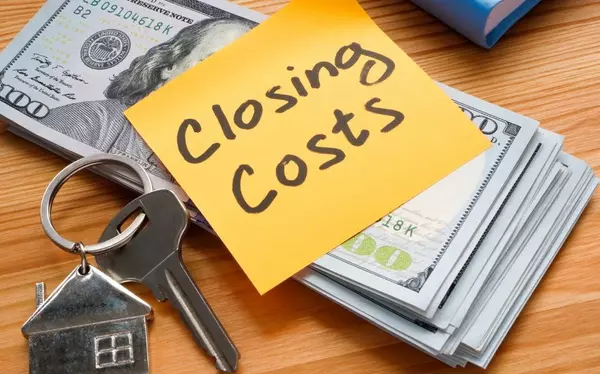How Walkability and Public Transit Access Impact Neighborhood Choice
How Walkability and Public Transit Access Impact Neighborhood Choice
When choosing a neighborhood, homebuyers and renters consider various factors like affordability, safety, and proximity to work or school. However, walkability and access to public transit have become increasingly important in shaping decisions. Walkability refers to how easy it is to navigate a neighborhood on foot, with amenities like grocery stores, parks, and restaurants within close reach. A walkable neighborhood can enhance daily convenience and promote a healthier lifestyle.
Public transit access is another key consideration, especially for those seeking alternatives to driving. Easy access to buses, trains, or subways reduces reliance on cars, cuts commute times, and offers a more sustainable mode of transportation. Neighborhoods with reliable transit options tend to attract a broader range of residents, from young professionals to retirees, all seeking greater mobility.
The growing demand for walkable, transit-friendly neighborhoods reflects a shift in lifestyle priorities. People are looking for communities that offer convenience, lower environmental impact, and an enhanced quality of life. Whether you're renting or buying, walkability and public transit access are often non-negotiable aspects of the decision-making process, making them vital in the real estate market.
Key Takeaways:
- Walkability and public transit access are essential factors that increasingly influence neighborhood choices for both homebuyers and renters.
- Walkability refers to the ease of navigating a neighborhood on foot, with proximity to amenities like grocery stores, parks, and restaurants being critical for convenience and lifestyle.
- Public transit access reduces reliance on cars, decreases commute times, and provides a sustainable transportation option, attracting a wide range of residents.
- Walkable and transit-friendly neighborhoods often see higher property values, reflecting their growing demand.
- These features contribute to better health, a lower carbon footprint, and an overall improved quality of life.
- Renters prioritize these elements, and landlords can leverage them to improve tenant retention by enhancing properties with walkability and transit in mind.
- Cities are increasingly investing in walkability and transit infrastructure, with future trends pointing towards electric buses, bike-sharing programs, and pedestrian-friendly urban designs.
Defining Walkability
Walkability refers to how conducive a neighborhood is to walking, based on factors like the availability of sidewalks, pedestrian safety, and proximity to essential services. It’s often measured using tools like the Walk Score, which evaluates an area based on the ease with which residents can access amenities such as grocery stores, schools, parks, and public transit hubs. A higher Walk Score indicates a more walkable neighborhood, making it desirable for people who prefer to run errands or commute on foot rather than by car.
Several key elements contribute to walkability. Sidewalks and pedestrian paths are essential for safe and convenient travel, while well-maintained crosswalks and traffic signals enhance pedestrian safety. The proximity of amenities like cafes, shops, and parks also plays a significant role in making a neighborhood more walkable, allowing residents to easily access daily necessities without relying on a vehicle.
Highly walkable neighborhoods, such as New York City's Greenwich Village or San Francisco’s Mission District, offer a unique urban living experience. These areas prioritize pedestrian access, often boasting a variety of local shops, dining options, and public spaces within walking distance, making them vibrant, desirable places to live for those seeking convenience and an active lifestyle.
Public Transit Access: A Key Factor in Urban Living
Public transit access plays a critical role in neighborhood choice, especially in urban environments. Reliable public transportation options, such as buses, trains, and subways, offer residents a convenient and cost-effective alternative to driving. For individuals without cars or those who prefer a sustainable lifestyle, access to transit is often a top priority when choosing where to live.
The relationship between public transit and commute times is significant. Efficient transit networks can drastically reduce the time spent traveling to work, school, or other daily destinations. Shorter commute times enhance quality of life by providing more time for personal activities and reducing the stress of lengthy journeys. This is particularly appealing in busy urban areas where traffic congestion can make car travel time-consuming and frustrating.
Access to public transit also enhances mobility for people from all walks of life. Whether it's young professionals, students, or retirees, public transportation creates greater independence and accessibility. It allows residents to connect easily with different parts of the city without the hassle of parking or vehicle maintenance. Neighborhoods with strong public transit systems, like those in Chicago or Washington, D.C., are often more attractive to a diverse range of residents seeking ease of movement and a more sustainable urban lifestyle.
Impact on Property Values
Walkability and access to public transit significantly affect property values, often driving up real estate prices in neighborhoods that offer these conveniences. Homes in walkable areas with easy access to amenities like grocery stores, parks, and public transportation tend to be in higher demand. This demand leads to increased property values, as buyers are willing to pay a premium for the convenience of not needing a car for daily errands or commuting.
Research consistently shows a positive correlation between walkable, transit-friendly neighborhoods and rising property prices. A study by the Urban Land Institute found that homes in highly walkable areas can sell for 10-20% more than those in less walkable locations. Similarly, access to reliable public transit, such as subway or bus lines, tends to increase home values, as it reduces commute times and makes the area more attractive to a broader range of buyers.
Different demographics are particularly drawn to walkable, transit-accessible neighborhoods. Millennials and eco-conscious buyers value the environmental and lifestyle benefits of living in areas where walking and public transit are viable options. Retirees often seek the convenience and mobility that comes with living close to amenities and transit, making these neighborhoods desirable across age groups and lifestyles.
Quality of Life and Environmental Benefits
Walkable neighborhoods and access to public transit contribute significantly to improved quality of life and environmental sustainability. Walking as a primary mode of transportation promotes better health outcomes, reducing the risk of heart disease, obesity, and other sedentary lifestyle-related conditions. Additionally, walking instead of driving encourages more active lifestyles, allowing residents to incorporate physical activity into their daily routines without extra effort.
From an environmental perspective, less reliance on cars leads to a notable reduction in carbon footprint. Fewer vehicles on the road mean lower greenhouse gas emissions and less air pollution, contributing to cleaner, healthier urban environments. Walkable, transit-friendly neighborhoods also help alleviate traffic congestion, reducing both commute times and the overall stress associated with driving.
Many eco-friendly communities have been designed with walkability and public transit access in mind. For instance, cities like Portland, Oregon, and Freiburg, Germany, are recognized for their pedestrian-focused infrastructure and robust public transit systems. These urban areas prioritize green spaces, bike lanes, and convenient public transportation, making them models of sustainable living. By reducing car dependence, these communities not only foster healthier lifestyles but also play a vital role in combating climate change and promoting long-term environmental health.
The Role of Walkability and Transit in Tenant Retention
Walkability and access to public transit play a crucial role in tenant retention. Renters, especially in urban areas, increasingly prioritize neighborhoods where they can easily walk to essential services such as grocery stores, restaurants, and parks. Similarly, proximity to public transit is a major draw, allowing tenants to commute without the need for a car, reducing both transportation costs and time spent in traffic. This convenience often leads to higher tenant satisfaction and a longer commitment to their rental homes.
Landlords and property managers can leverage these factors to improve tenant retention. By promoting the walkability of the area and nearby public transit options, they can attract renters looking for convenience and mobility. Highlighting these features in rental listings, along with showcasing nearby amenities, helps prospective tenants see the long-term benefits of staying in the property.
Additionally, landlords can enhance rental properties with walkability and transit access in mind. Providing bike racks, improving walkways, or offering transit-related perks like discounted passes can make properties even more appealing. These features not only attract new tenants but also encourage existing ones to stay, creating a stable rental environment that benefits both tenants and property managers.
Urban Planning and Future Trends
Cities worldwide are increasingly investing in walkability and transit infrastructure to meet growing demand for sustainable urban living. Urban planners recognize the need for accessible, pedestrian-friendly neighborhoods, leading to the development of wider sidewalks, better crosswalks, and mixed-use spaces where residents can easily walk to shops, restaurants, and services. Investments in public transit, such as expanding bus lines, upgrading subway systems, and adding train routes, are also enhancing mobility and reducing reliance on personal vehicles.
Smart city planning plays a vital role in this transformation, integrating technology and urban design to improve access to amenities. By analyzing data on traffic patterns, pedestrian flow, and transit use, planners can make informed decisions about where to invest in infrastructure. This results in more efficient public transit routes, better walkability, and increased access to essential services, creating more livable urban spaces.
Future trends are shaping the next phase of urban planning. Electric buses and bike-sharing programs are becoming common, offering eco-friendly alternatives to car travel. Additionally, pedestrian-friendly streets are being designed to prioritize walkers and cyclists over vehicles. Cities like Amsterdam and Copenhagen lead the way in creating car-free zones and promoting sustainable transportation, offering a glimpse into the future of urban mobility.
Conclusion
Walkability and public transit access are major factors that influence neighborhood choice for both homebuyers and renters. Highly walkable neighborhoods allow residents to easily access amenities like grocery stores, parks, and entertainment, creating a more convenient and enjoyable lifestyle. Similarly, access to public transit reduces reliance on cars, shortens commute times, and offers a more sustainable mode of transportation, making these areas even more attractive. As people increasingly prioritize health, environmental impact, and convenience, neighborhoods with strong walkability and transit systems are becoming highly sought after.
The growing demand for walkable, transit-friendly communities reflects changing lifestyle preferences, with many buyers and renters seeking greener, more active ways of living. Cities are responding by investing in infrastructure that promotes walkability and expands transit options, making these neighborhoods even more desirable in the future.
For those looking to buy or rent in walkable, transit-accessible neighborhoods, it’s important to research factors like Walk Score and proximity to public transportation hubs. Consider whether the area offers the daily conveniences you need, such as grocery stores, schools, and parks, within walking distance. Choosing a neighborhood with these features not only enhances your quality of life but can also provide long-term value in a growing real estate market.
Categories
Recent Posts










